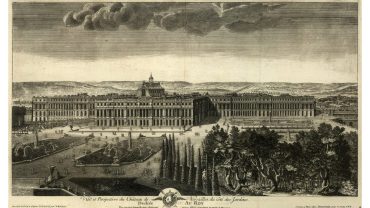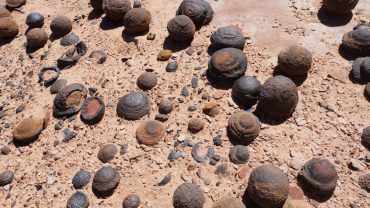In the Andean jungle of southeastern Ecuador, just 20 miles from the Peruvian border, is the infamous Cueva de los Tayos, or Cave of the Oilbirds. Named for the nocturnal birds that occupy it, the vast Tayos Cave system has become the stuff of legend and conspiracy.
Some say it contains a metal library with golden plates carved with a hitherto unknown history of man. They whisper that its tunnels are too perfect to be natural. That they were made by ancient people guided by alien technology. So, what’s the truth about the caves of Tayos? Do its caverns and galleries really hide the secrets of a lost civilisation? Let’s plunge right in and explore.
Cueva de los Tayos

The Morona-Santiago Province, Ecuador (Credit: Aaron McCoy via Getty Images)
Beneath the jungle of southeastern Ecuador, the sprawling cave system of Cueva de los Tayos is hidden on the edges of the Andes in the Morona-Santiago Province. Stretching for roughly seven miles, probably the longest cave in Ecuador, it can only be accessed through a narrow 230-foot vertical drop known as “the Chimney.”
Inside, the extraordinary features of the Tayos Cave unfold: A labyrinthine world of chambers the size of large buildings connected by narrow galleries and impressive halls. Some are pierced by jagged stalactites and stalagmites. But other spaces are extraordinary for their staggeringly smooth surfaces, straight edges, and crisp angles, among them the impressive entranceway known as the Moricz portal, noted as much for its grand scale as for its square shape. Indeed, many believe that such polished perfection could only have been artificially constructed. And, more than anything, it’s probably this that has fuelled the myths and legends that seem to have clung to the caves of Tayos for as long as people have explored their depths.
A Place of Myth and Legend

Are the caves a subterranean world inhabited by powerful spirits? (Credit: imaginima via Getty Images)
While it’s unclear when humans first discovered the Cueva de los Tayos, it seems it was long seen as a site of spiritual and cultural significance. For instance, the oldest known Tayos Cave artefacts, dated as far back as 1500 BC, were almost certainly made for rituals and funerals. And the folklore of the indigenous Shuar people speaks of the cave as a subterranean world inhabited by powerful spirits. Then, when later explorers discovered Tayos Cave, a new generation of myths and conspiracies was born, spreading to the wider world, all beginning with the claim of the discovery of the Tayos Cave metal library.
The Golden Library

Engraved golden heiroglyphics (Credit: pidjoe via Getty Images)
In the 1960s, a Hungarian explorer named Juan Moricz claimed to have found a long lost metal library within the Cueva de los Tayos. Specifically, he claimed the Tayos Cave metal library was a collection of golden plates engraved with hieroglyphs and other symbols. Moricz believed that the tomes had belonged to an ancient civilisation that had encountered advanced extraterrestrials; and that they held not only a secret “real” account of humanity’s origins, but also details of technology gifted to man by the aliens. He never provided any evidence for this nor details of where in the cave he found them. Nevertheless, this was the catalyst for a series of beliefs and theories.
The Legend Spreads

Erich von Däniken (Credit: United Archives via Getty Images)
The story of the golden plates quickly spread beyond Ecuador, capturing the attention of the international community. In 1968, another expedition explored the caves in search of further evidence, but it remained elusive. The legend gained further momentum in 1973 with the publication of The Gold of the Gods by Erich von Däniken, a Swiss author known for his theories about ancient astronauts and extraterrestrial influences on early human civilizations. Like Moricz, von Däniken claimed that the Tayos Cave metal library contained evidence of alien contact with ancient humans. He described the golden plates and other alleged Tayos Cave artefacts in vivid detail, suggesting they were part of a vast archive of extraterrestrial knowledge. This sensational account drew widespread attention and sparked numerous expeditions to the cave.
The 1976 Expedition

The greatest single broadcast in television history (Credit: Jindřich Blecha via Getty Images)
Over the years, there have been several expeditions into Cueva de los Tayos. The most famous of them occurred in 1976, when Scottish explorer Stan Hall led a team of around a hundred experts into its depths. Among them was astronaut Neil Armstrong. Yes, that Neil Armstrong, the first man to walk on the moon, was there. So, what did they discover?
The Tayos Cave Artefacts

Apachitas on a rock formation (Credit: Foto Para Ti via Getty Images)
Crucially, the expedition found no evidence of the Tayos Cave metal library. The Tayos Cave artefacts they did unearth were indicative of rituals and ceremonies. Like man-made stone steps, and deliberate stone piles known as apachitas, which might have been an altar or temple. And over a hundred ceramic fragments that were once containers adorned with bird and animal symbols. There were also various shell objects, beads for necklaces and plates, some of which depicted snakes and feline features.
Assessing the Evidence

Natural cave formation (Credit: Jason Edwards via Getty Images)
The debate over the existence of the Tayos Cave metal library and the golden plates remains unresolved, but there’s no known evidence to support Moricz’s claims or von Däniken’s theories. Geologists and archaeologists largely agree that the cave’s formations are natural and that there’s no credible proof of an advanced ancient civilization with a metal library. However, the absence of evidence has not entirely quelled the speculation and intrigue. This has played out on the small screen, in a number of shows and documentaries that continue to explore the story.
An Ongoing Search

Golden plate (Credit: MirageC via Getty Images)
And so, despite the lack of concrete evidence, proponents of the myths and legends surrounding the Cueva de los Tayos refuse to cave in. The allure of a hidden library of golden plates, the possibility of ancient civilizations, and the geological wonders of the caves of Tayos continue to draw explorers and researchers to this enigmatic site.












